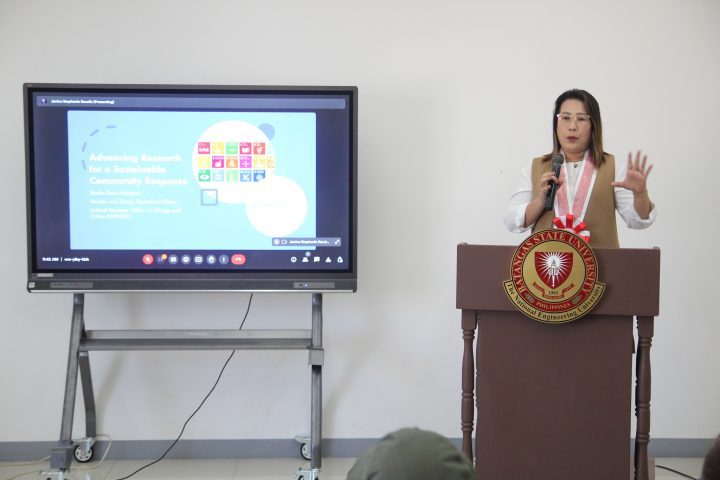In modern urban traffic, vehicles and pedestrians are fundamental elements in the study of traffic dynamics. Vehicle and pedestrian detection have significant practical value in fields like autonomous driving, traffic management, and public security. However, traditional detection methods struggle in complex environments due to challenges such as varying scales, target occlusion, and high computational costs,...
Tag: 9
CAScade event highlights Graduate School research for sustainability
The College of Arts and Sciences (CAS) of Batangas State University-The NEU recently held “CAScade – Advancing Graduate School Research towards Sustainability”. Organized by Master of Arts in Development Studies students in collaboration with the Center for Sustainable Development, the event took place on December 2, 2023, at the Student Services Center Building II, Seminar...
Developing an LTE Learning Material: Experiences from a University in a Developing Country
Remote learning has increased, especially in engineering courses that require digital platforms, due to the COVID-19 pandemic. However, the current curriculum doesn’t emphasize telecommunications, making LTE principles difficult for students to understand. To address this issue, researchers developed a 4G LTE learning system using MATLAB LTE Toolbox. MATLAB’s Live Scripts, Scripts, and App Designer implement...
Haar-CNN Cascade for Facial Expression Recognition
Recognizing emotions can aid in the interpretation and communication of non-verbal communication. Although deep neural networks perform well in automatically extracting and learning high-level representations of facial features from large amounts of multidimensional data, there is still a need for a face detection model to work fast for real-time applications. This working experiment investigates the...
Renal Cyst Detection in Abdominal MRI Images using Deep Learning Segmentation
Renal cysts are categorized as simple cysts and complex cysts. Simple cysts are harmless and complicated cysts are cancerous and leading to a dangerous situation. The study aims to implement a deep learning-based segmentation that uses the Renal images to segment the cyst, detecting the size of the cyst and assessing the state of cyst...
A 210-MHz 4.23 fJ Energy/Bit 1-kb Asymmetrical Schmitt-Trigger-Based SRAM Using 40-nm CMOS Process
This brief introduces a 1-kb SRAM design that operates at low power utilizing asymmetrical Schmitt-trigger based SRAM cells. By adopting an asymmetrical design, the SRAM cell performance in terms of hold, access, and write capabilities were enhanced. A power reduction and speed compensation circuit is presented in the design. The SRAM is implemented and fabricated...
Automated Computer-Aided Detection and Classification of Intracranial Hemorrhage Using Ensemble Deep Learning Techniques
Diagnosing Intracranial Hemorrhage (ICH) at an early stage is difficult since it affects the blood vessels in the brain, often resulting in death. We propose an ensemble of Convolutional Neural Networks (CNNs) combining Squeeze and Excitation–based Residual Networks with the next dimension (SE-ResNeXT) and Long Short-Term Memory (LSTM) Networks in order to address this issue....
Formulated Hand Sanitizer Utilizing Passion Fruit (Passifloraedulis) Leaf Extract as an Active Ingredient
Passiflora edulis leaf extracts were added as an active ingredient for alcohol-based hand sanitizer (ABHS). Matured leaveswere air-dried, powdered, and soaked in methanol (1:10, w/v) for 24 hours. The solvent-free crude extract was used toformulate hand sanitizer utilizing varying amounts of leaf extract (1,3 and 5% w/w). The antimicrobial activities of the leafextracts and the...
Design of Patient Specific Hip Prosthesis based on Finite Element Analysis: A Comparative Study
This study aims to develop a patient-specific hip implant for osteoarthritis conditions and to compare with intact and conventional implant. The femoral bone with head and shaft region was segmented from the pelvic griddle and converted into 3D model. The parameters such as femoral ball diameter, shaft length, acetabular cup diameter, and neck angle were...
A 1.0 fJ energy/bit single-ended 1 kb 6T SRAM implemented using 40 nm CMOS process
An ultra-low-energy SRAM composed of single-ended cells is demonstrated on silicon in this investigation. More specifically, the supply voltages of cells are gated by wordline (WL) enable, and the voltage mode select (VMS) signals select one of the corresponding supply voltages. A lower voltage is selected to maintain stored bit state when cells are not...





